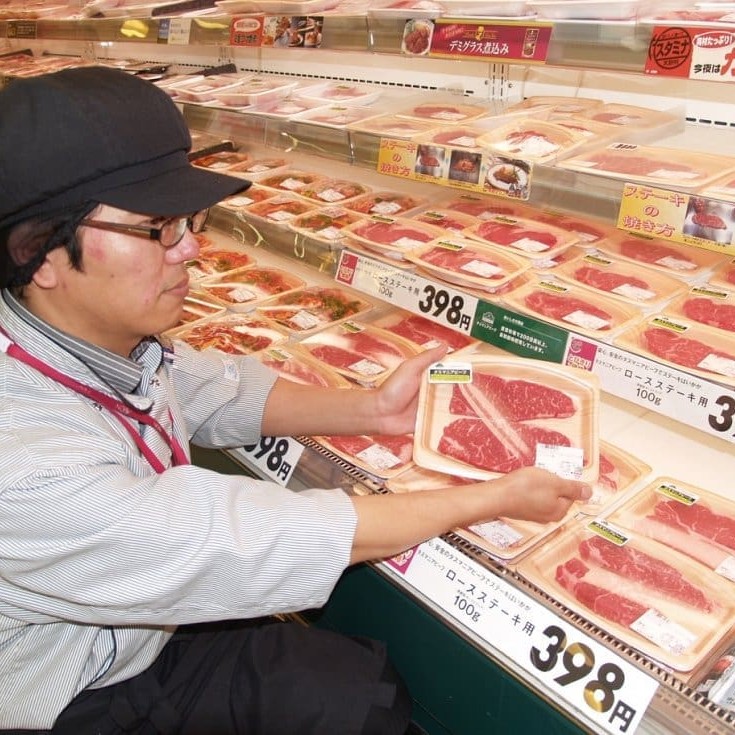 Market challenges in Australia’s traditionally strong grainfed export destinations of Japan and Korea will continue to dampen prospects for lotfed beef this year, MLA’s 2013 Industry Projections report released yesterday suggests.
Market challenges in Australia’s traditionally strong grainfed export destinations of Japan and Korea will continue to dampen prospects for lotfed beef this year, MLA’s 2013 Industry Projections report released yesterday suggests.
Feedlot activity is likely to remain under pressure throughout 2013, with the two major grainfed beef destinations showing little sign of improvement, the A$ unlikely to fall below parity against the US$, and most operating costs set to remain high.
Australian grainfed beef exports to Japan will not only be challenged in 2013 by the A$, but also by the relaxation on the age restriction placed on beef from US cattle entering Japan, rising from February from cattle no older than 20 months of age at slaughter to 30 months.
“This will lift the availability of US grainfed beef to Japan importers, despite an anticipated rise in US beef prices, as US cattle numbers on feed are forecast to be the lowest in a number of years and production costs at record highs, after suffering two years of drought,” this year’s Projections report says.
Similarly, Korea, Australia’s second largest grainfed beef export market, continues to face economic uncertainty and seems set to record another year of higher domestic production.
Early in 2012, the Korean Government announced an intention to reduce the domestic cattle herd from 3.3 million head to 2.6 million head by the end of 2013, mainly through financial incentives to producers to cull 200,000 less productive cows.
As the Korean industry is based on grain feeding, Australian grainfed exports will likely be impacted more than grassfed product. Furthermore, the US now enjoys a widening tariff advantage over Australian product – adding further pressure on the position of Australian grainfed beef in the Korean market.
Among other grainfed market destinations, the European Union stands out as the brightest prospect for Australian grainfed beef exports in 2013, given increased quota volumes (48,200t, available on a first-come, first-served basis between the US, Canada, Uruguay, New Zealand and Australia) and growing demand for grainfed beef.
The EU is the highest valued market in the world for Australian beef, with predominately muscle cuts exported. Shipments to the EU are likely to continue rising over the next year, particularly while US supplies remain tight and despite European economic uncertainty.
Other markets to show promise include:
- Taiwan, which has received significantly greater volumes of Australian grainfed beef over the past two years. Although the majority of product is shin/shank, grainfed exports to Taiwan are likely to remain stable
- Grainfed beef exports to Jordan, China, the Philippines and Malaysia all rose substantially during 2012, and were up significantly on the five-year trend. As population and incomes continue growing in these regions, and with an increasing western influence, grainfed beef demand is also likely to continue growing.
Australian beef consumption, which is underpinned by shortfed feeding regimes for major retail chains, is expected to remain stable through 2013.
Despite subdued export demand in the major markets, and the growth in other markets unlikely to offset that decline, domestic demand will again provide a base for numbers on feed and feedlot utilisation levels, MLA’s report says.
Looking forward, subdued demand in the major export destinations is expected to hold quarterly numbers on feed at between 700,000 head and 800,000 head this year. Any significant boost in numbers over the short term could be driven by an extended period of dry conditions and the need to finish cattle to specification, although feed grain prices will also play a huge role in utilisation levels.
Total feedlot utilisation fell during the September 2012 quarter to 56pc, and utilisation during the first half of 2013 will depend on the extent of the current dry spell.
Lotfeeding operating costs are set to remain high, with labour, feedgrain and fuel prices not likely to ease in the short term.
Feed grain prices across Australia surged throughout the December quarter, influenced by soaring corn prices in the US. Barley ($A250/t), sorghum ($A235/t) and wheat ($A278/t) prices in the Darling Downs rose 4pc, 6pc and 14pc respectively, year-on-year.
The steady decline in feeder cattle prices over the second half of 2012, after a dry winter and spring, is the only reprieve in operating costs for the start of 2013. Indicative national feeder cattle (yearling steers C3 330-400kg) prices averaged 196¢/kg during December of 2012, down 5pc from the corresponding period last year.
